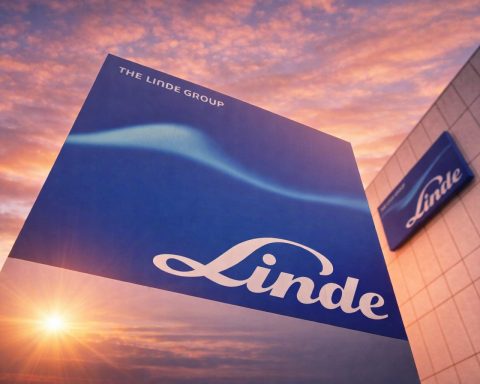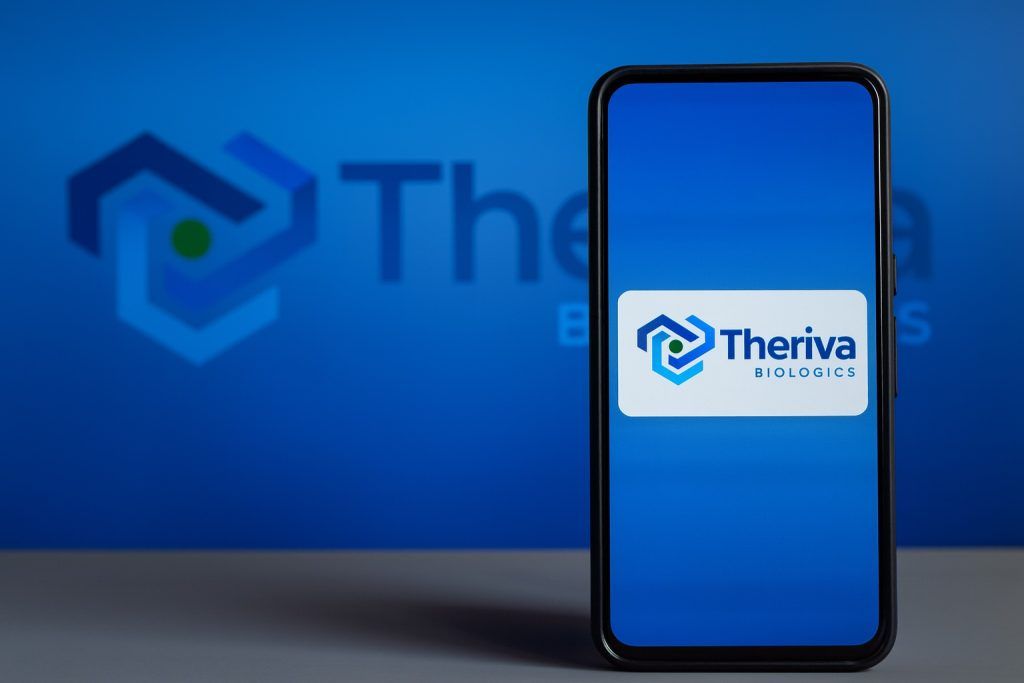Key Facts – October 24, 2025
- New Record & $3T Milestone: Alphabet Inc. (NASDAQ: GOOG) has surged to record levels this week, trading around $260 per share on Oct. 24 – near its all-time intraday high – lifting the Google parent’s market capitalization to roughly $3.1 trillion [1] [2]. The stock is up about 30% year-to-date, vastly outperforming the S&P 500 (~12%) and even most other Big Tech giants [3] [4].
- Earnings on Deck: Alphabet will report Q3 2025 earnings on Oct. 29, and expectations are high. Analysts predict robust growth – full-year 2025 revenue up ~16% and earnings up ~27% – driven by a rebound in digital ads and booming cloud demand [5]. For Q3 specifically, consensus forecasts call for around $100 billion in revenue and earnings of $2.29 per share [6].
- AI Investments & Products: Google is investing heavily in artificial intelligence. In recent weeks it announced over $24 billion in new AI and cloud infrastructure spending – including a $15 billion data center project in India (its largest ever there) and a $9 billion expansion of U.S. data centers [7]. The company also rolled out new AI-powered products in October, such as the Pixel 10 smartphone featuring a next-gen Tensor G5 chip and “AI everywhere” software features [8].
- Rollercoaster Week: Alphabet’s stock saw a volatile week of news. Shares hit an intraday high of $257.33 on Monday, then dipped Tuesday after OpenAI unveiled a “ChatGPT Atlas” web browser – spooking markets with new AI competition. The stock rebounded Wednesday and Thursday, buoyed by Google’s unveiling of a breakthrough quantum computing algorithm and reports of a multi-billion-dollar cloud deal with Anthropic (an AI startup) to provide up to 1 million Google TPU chips [9]. By early Friday, the stock was rallying again – up over 1% pre-market – erasing the mid-week dip [10].
- Bullish Sentiment: Investor optimism is soaring. Wall Street analysts have issued a flurry of upgrades and price target hikes, and retail traders are increasingly exuberant. By Friday, social sentiment on Stocktwits for GOOGL jumped to “extremely bullish,” with traders predicting an “explosive” push to new highs [11]. The stock is only marginally changed for the week, reflecting its quick rebound from Tuesday’s brief sell-off [12].
- Analysts Raise Targets: Numerous analysts now see more upside for Alphabet. Morgan Stanley recently boosted its target to $270 (Overweight) [13], BMO Capital to $294 citing Google’s “AI leadership” in Search and Cloud [14], and Oppenheimer to a Street-high $300 (about 15–18% above current levels) [15]. This Friday, Stifel raised its target from $222 to $292, noting improving ad trends and favorable antitrust outcomes [16], and Bernstein lifted its target to $260 from $210 as AI development accelerates [17]. Over 90% of analysts rate the stock a Buy or equivalent [18] [19], reflecting confidence in Alphabet’s growth trajectory.
- Regulatory Relief & Risks: Alphabet got a major legal reprieve last month when a U.S. judge ruled Google will not be forced to sell key assets like Chrome or Android in an antitrust case [20]. Instead, the court imposed milder remedies (e.g. data-sharing with rivals) – avoiding a breakup and removing a huge overhang for investors [21] [22]. That favorable ruling sent Alphabet shares up ~7% on the news. However, regulatory pressures persist globally. The U.K.’s competition regulator just designated Google’s search business with a special “strategic market status”, paving the way for stricter oversight of its ~90% search market share [23]. And in the U.S., the Supreme Court allowed an injunction (from Epic Games’ lawsuit) that will force Google to loosen its app store policies by 2026 [24]. Antitrust trials over Google’s ad tech business are also underway, keeping some regulatory risk in the background.
- Broader Tech Rally: Alphabet’s surge comes amid a broader AI-fueled tech rally. This week, Apple Inc. joined the party – its stock jumped 3.9% to a record $262.24 close on Monday, a new all-time high that boosted Apple’s market value near $4 trillion [25]. Microsoft has also rallied, up roughly 23% in 2025 [26] (after briefly hitting its own $3T valuation in summer). E-commerce giant Amazon, while up from recent lows, remains roughly flat on the year – lagging its mega-cap peers [27]. Overall, the tech-heavy Nasdaq Composite recently notched record highs amid what some call “AI euphoria,” with mega-cap stocks like Alphabet leading the charge [28].
- Valuation & Outlook: The AI boom has lifted valuations, prompting a few cautionary voices. A recent Bank of America survey found 54% of fund managers believe AI stocks are in a bubble territory [29]. Yet many analysts argue Alphabet’s valuation is still reasonable relative to peers – trading around 20× forward earnings, a discount to some rival tech giants [30]. Alphabet’s 2025 earnings are projected to climb ~18% over 2024 [31], and the company’s massive cash generation (funding aggressive buybacks) helps support its stock price [32]. “We are more bullish on [Alphabet] near term, given more conservative estimates and lower valuation,” wrote one Oppenheimer analyst, calling Google’s stock attractively valued even at record highs [33]. In short, while risks (from regulation to competition) remain, the consensus on Wall Street is that Alphabet’s fundamental strengths in Search, advertising, and AI position it for further growth in both the near term and long term [34].
Alphabet Rallies to Near Record Highs on AI Momentum
Google’s headquarters campus in Mountain View. Alphabet’s stock (GOOG) has been on a tear, reaching all-time highs as investors cheer the company’s AI strides and strong financial performance.
Alphabet’s stock is soaring into uncharted territory as of late October 2025. Shares of the Google parent company traded around $260–261 on Friday, flirting with the highest levels in its history [35]. Earlier this week, Alphabet hit an intraday peak just above $257 – marking a new record – and its latest surge has propelled the company’s market capitalization near the elite $3 trillion club alongside Apple and Microsoft [36]. Year to date, GOOG has climbed roughly 30%, a stellar run that far outpaces the broader market (the S&P 500 is up only ~12% in 2025) and even outperforms most of the “Magnificent 7” mega-cap tech stocks [37]. This rally accelerated in recent months amid a wave of enthusiasm for artificial intelligence initiatives across the tech sector.
Recent trading has been volatile but upward biased. Alphabet’s stock started this week strong, riding broader market gains and optimism around tech earnings. On Monday (Oct. 20), the price spiked to $257.33 intraday – a new all-time high – as Alphabet briefly joined Apple and Microsoft in the exclusive $3T valuation league [38] [39]. Come Tuesday, however, shares pulled back after OpenAI (creator of ChatGPT) unveiled a new AI-powered web browser, nicknamed “ChatGPT Atlas.” The prospect of enhanced AI search tools from OpenAI/Microsoft spooked some investors, triggering a sell-off in Google’s stock on fears of rising competition in search and browsers [40]. Despite that mid-week wobble, Alphabet proved resilient: by Wednesday and Thursday the stock rebounded as positive company news and easing macro worries took center stage. Google’s researchers announced a breakthrough in quantum computing algorithms, and reports surfaced of a massive cloud-computing deal with AI startup Anthropic – an Amazon-backed firm that nonetheless plans to expand its use of Google’s cloud, including up to 1 million of Google’s AI chips (TPUs) in a deal worth tens of billions of dollars [41]. These developments helped reaffirm Alphabet’s leadership in cutting-edge tech, lifting the stock back toward its highs. By Friday, Alphabet was trading just shy of its record again and up modestly for the week overall [42] [43].
Wall Street’s broader risk appetite has also improved, adding fuel to Alphabet’s rise. The Nasdaq Composite index recently notched new highs, buoyed by strong tech earnings and AI optimism. Notably, Apple – a fellow tech titan – saw its stock jump nearly 4% this week to a record $262.24 close (its first high of 2025) on optimism about iPhone 17 sales [44]. Microsoft is hovering near its own peak after a 23% surge this year [45]. In contrast, Amazon has been a relative laggard, with its stock roughly flat in 2025 and still below early-year highs [46]. The fact that Alphabet has outperformed most of its FAANG peers underscores the market’s confidence in Google’s strategy. “It’s been a standout run for Alphabet,” noted one market strategist, pointing out that Google’s gains have eclipsed those of many rivals thanks to excitement around its AI endeavors and a recovery in its core advertising business.
Strong Earnings Expected as Ads & Cloud Rebound
Alphabet’s fundamental performance is reinforcing the bullish sentiment. The company is scheduled to report third-quarter earnings next week (after the market close on Oct. 29), and analysts are anticipating strong results [47]. Consensus estimates compiled by Fiscal.ai call for Q3 revenue of about $100 billion and net profit around $2.29 per share [48], which would mark healthy growth from the same quarter last year. For the full year 2025, Wall Street forecasts roughly 16% higher revenue and 27% higher EPS compared to 2024 – a remarkable reacceleration for a company of Alphabet’s size [49]. This optimism comes after Alphabet already impressed investors in the first half of the year: in Q2 2025, Google’s advertising revenue climbed ~10–12% year-on-year (signaling a rebound in online ads despite new AI-driven competition), while Google Cloud revenue jumped 32% with improved profit margins [50]. Those Q2 results beat expectations and showed that both of Alphabet’s main revenue engines – ads and cloud services – are back to double-digit growth after a brief pandemic-era slowdown.
Recent industry checks suggest the positive trend continued in Q3. Stifel analysts reported this week that their channel checks indicate digital ad spending picked up toward the end of the quarter, benefitting Google’s search and YouTube ad businesses [51]. “Third-quarter advertising growth trends generally improved relative to Q2,” the firm noted, citing a healthier environment for marketers in late 2025 [52]. Google’s dominant share in search advertising (still around 90% globally) means even moderate upticks in ad budgets can translate into billions in incremental revenue for Alphabet. YouTube, which had faced a slight ad slump last year, also appears to be on the upswing as video ad demand returns. On the cloud side, Google is riding momentum from large enterprise wins – including becoming the official cloud provider for the 2028 Olympics [53] – and from broader growth in AI-as-a-service. In Q2, Google Cloud finally achieved profitability, and investors will be watching Q3 results to see if those margins expanded further alongside rapid revenue growth.
Beyond the numbers, CEO Sundar Pichai is likely to emphasize Alphabet’s diverse revenue streams and innovation pipeline on the earnings call. The company’s core search and advertising franchise remains a cash cow, funding bets in newer areas like cloud computing, hardware, and “Other Bets” (which include Waymo self-driving cars, Verily life sciences, etc.). Many analysts expect Google’s management to sound a confident note about AI integration across its products – from injecting generative AI into Search and Gmail to monetizing AI in Google Cloud – while also addressing how Google will defend its turf against rising AI competitors. Any commentary on cost discipline and capital spending will be scrutinized as well, given the massive investments Google is making (and the ongoing hiring moderation after last year’s layoffs). Overall, with the stock near highs, Alphabet will need to deliver solid Q3 results and a reassuring outlook to meet investors’ lofty expectations.
Betting Big on AI: Massive Spending and New Products
If one theme defines Alphabet’s 2025 surge, it’s artificial intelligence. Google’s reputation as an AI leader – from search algorithms to self-driving tech – has been a central driver of investor enthusiasm. In recent weeks, the company has doubled down with a series of headline-grabbing investment announcements aimed at extending its AI dominance. Notably, Alphabet unveiled plans to spend over $24 billion on new infrastructure to power AI and cloud services [54]. This includes a record $15 billion investment to build a cutting-edge AI data center campus in India, Google’s largest-ever outlay in that country [55]. The planned Indian data center, located in Andhra Pradesh, will start at 1 gigawatt of capacity and expand over five years – underscoring Google’s commitment to bring AI capabilities (and cloud regions) closer to big new markets. Alphabet also announced a $9 billion expansion of its U.S. data centers [56], including advanced supercomputing facilities in South Carolina to bolster Google Cloud. Thanks to these and prior projects, the company’s capital expenditures are projected to exceed $80 billion in 2025, up sharply from about $52 billion last year [57]. “We’re seeing a once-in-a-generation investment cycle around AI, and Google is all in,” one analyst told Barron’s, noting that few companies on earth have both the cash and the conviction to spend at this scale. Google clearly aims to ensure it has the sheer computing horsepower (TPUs, GPUs, data centers) to both develop AI models and offer AI cloud services to others.
On the consumer front, Google has been quick to infuse AI into its products. At its “Made by Google” event in early October, the company launched the Pixel 10 smartphone and other gadgets – all boasting AI enhancements [58]. The Pixel 10 features Google’s new Tensor G5 chip, which leverages AI for everything from better photos to on-device voice commands [59]. Google also rolled out updates to its Android software and services with more AI-driven features (like enhanced Assistant and Bard capabilities). These product launches send a message that Google is weaving AI “everywhere” in its ecosystem – a point likely to resonate with consumers and help it keep pace with AI offerings from rivals. In Search, Google’s flagship product, the company has begun public testing of its Generative AI search features that can craft longer answers (an answer to Microsoft’s AI-infused Bing). And this week, Google’s DeepMind unit announced a new quantum computing algorithm that could potentially speed up certain calculations, showing Google is pushing the frontier of what’s next in tech [60].
Perhaps most significantly, Alphabet is securing strategic partnerships in AI. The cloud deal with Anthropic, reported this week, exemplifies Google’s approach. Despite Anthropic receiving a major investment from Amazon recently, the AI startup (known for its Claude chatbot) confirmed it will deepen its use of Google Cloud infrastructure, planning to access up to 1 million of Google’s tensor processing units for training AI models [61]. The expanded partnership – valued in the tens of billions of dollars over several years – will bring well over a gigawatt of new capacity online for Anthropic by 2026 [62]. For Alphabet, such deals not only bring immediate cloud revenue but also keep top AI players tied into Google’s orbit (and prevent rivals like AWS from having it all). Google has also forged AI alliances with companies like Cohere and invested in startups like Runway. All these moves signal that Alphabet is determined to remain at the cutting edge of the AI “arms race”, both through internal R&D and by enabling other AI firms via Google Cloud. Investors have largely cheered these moves – albeit with an eye on the price tag – as they suggest Google is positioning itself to capitalize on AI long-term, much as it did with the rise of mobile and cloud.
Wall Street Bulls: Upgrades, Price Targets, and Expert Takes
Alphabet’s impressive execution in 2025 has earned it near-universal praise from Wall Street analysts. In fact, Google’s stock may be one of the most loved among large-caps right now. According to FactSet data, over 85–90% of analysts covering Alphabet have a “Buy” or equivalent rating on the stock [63], and none of the major brokerages recommend selling. The average 12-month price target sits around $260–$270 per share [64] – roughly where the stock trades now – but many bullish analysts have been racing to revise their targets upward as Alphabet’s outlook improves.
Just in the past few weeks, a flurry of price target hikes have hit the tape: Morgan Stanley raised its target to $270 from $210 (reiterating an Overweight stance) amid what it called “underappreciated” AI and advertising strength [65]. BMO Capital Markets bumped its target to $294, citing Google’s “AI leadership” driving upside in both Search and Cloud segments [66]. Oppenheimer issued one of the Street’s highest targets at $300, arguing that even at $260 a share, Alphabet is still reasonably valued compared to peers and offers more near-term upside than other tech names like Meta [67] [68]. That $300 target implies roughly 15% upside from current levels. “We are more bullish on [Alphabet] near term, given more conservative estimates and lower valuation,” the Oppenheimer analyst wrote, emphasizing that Google’s P/E multiple (around twenty times forward earnings) is actually lower than many peers, despite its high-growth profile [69]. In other words, Alphabet’s earnings are growing so robustly that the stock hasn’t stretched into bubble territory by traditional metrics – a key point for valuation-conscious investors.
This week brought even more bullish calls. Stifel analysts, after observing improving ad trends, boosted their target from $222 all the way to $292 [70]. Their note highlighted Alphabet’s better-than-expected ad revenues and also pointed to “favorable antitrust remedies” that reduced worst-case regulatory fears [71]. Similarly, Bernstein – which had been more cautious – raised its target to $260 (from $210) citing abating regulatory overhangs and faster progress in AI development than previously assumed [72]. Even Wedbush Securities jumped in, reportedly lifting its target to $260 from $245 and maintaining an Outperform rating as of Friday morning (Oct. 24). The drumbeat of positive revisions suggests that as Alphabet’s share price has climbed, analysts have growing conviction that it can sustain these levels (or move even higher), backed by tangible earnings growth.
To be sure, not every analyst is pounding the table – a few are holding neutral stances after the stock’s big run. For instance, UBS recently nudged its price target up to $255 but kept a “Neutral” rating, essentially suggesting the stock’s risk/reward is balanced around the mid-$250s in the short term [73]. These more cautious voices cite risks like intensifying competition (AI chatbots possibly nibbling at Google’s search dominance, or Microsoft’s AI investments in Bing and Office), as well as the sheer magnitude of Alphabet’s year-to-date rally. If growth were to disappoint or if macroeconomic factors turn south, high-flying tech stocks could see pullbacks. Nonetheless, even the neutral analysts generally acknowledge Alphabet’s strong fundamentals. The few holdouts often point out that their caution is primarily about the lofty share price, not about Google’s business health.
Overall, the Wall Street consensus remains highly favorable. The median analyst expectation is that Alphabet will continue growing earnings at a double-digit clip through 2026, driven by its commanding position in search advertising, ongoing expansion of Google Cloud, and new revenue opportunities in AI. Alphabet’s balance sheet strength (over $120 billion in cash) and hefty stock buybacks also support the stock by reducing share count and signaling confidence – Alphabet repurchased nearly $70 billion of its own shares last year and has authorized tens of billions more for buybacks [74]. With such broad endorsement from analysts and a track record of beating estimates in recent quarters, Alphabet has plenty of institutional support propping up its valuation. If anything, the recent wave of upgrades shows that many analysts see the stock’s momentum as justified by fundamentals, not just hype.
Big Tech Showdown: Alphabet vs. Apple, Microsoft, Amazon
Alphabet’s ascent in 2025 has put it back in the conversation with Apple and Microsoft at the top of the market-cap rankings. At roughly $3 trillion in value, Google’s parent is now not far behind Apple’s ~$3.9 trillion – a gap that was much wider earlier in the year. How does Alphabet stack up against its fellow tech titans in key areas?
In terms of stock performance, Alphabet has had one of the strongest rallies among mega-caps this year. Its ~30% year-to-date gain edges out Microsoft (+23% YTD) [75] and vastly exceeds Apple’s roughly 10% YTD rise (Apple spent much of the year in negative territory before a big rebound this fall) [76]. Alphabet also handily beat the Nasdaq 100 index (+17% YTD) [77]. The only Big Tech name that outpaced Alphabet in 2025 is Meta Platforms, which had surged on a rebound from its 2022 lows. Meanwhile, Amazon has notably underperformed – after an early-year jump, Amazon shares slumped and only recently recovered, now essentially flat in 2025 and sitting about 8–9% below their all-time high from February [78]. This disparity reflects how different each company’s narrative has been: Amazon has faced e-commerce slowing and heavy spending on its own AI chips, while Alphabet has surprised the market with resilient ad growth and high-profile AI wins.
From a fundamental standpoint, Alphabet, Apple, and Microsoft all enjoy enormous profits and cash flows, but their current stories differ. Apple’s recent record high was fueled by optimism for the iPhone 17 cycle and services growth – Loop Capital’s upgrade of Apple, citing strong iPhone demand, helped push the stock up 3.9% to its new high [79]. Apple’s revenue is growing only in the mid-single digits, but its margins and loyal customer base make it a safe haven. Microsoft, for its part, has been a leader in cloud computing (Azure) and is aggressively integrating AI across its software products (from GitHub Copilot to Microsoft 365 Copilot). Microsoft hit a $534 stock price in August (an all-time closing high) [80], but after a brief dip has been climbing back on the strength of its AI and cloud prospects – and it remains one of only two U.S. companies (with Apple) above $3 trillion market cap. Alphabet’s advantage over both lies in its combination of growth and valuation: Google’s revenue is expected to grow faster than Apple’s (which is more mature), yet Alphabet’s stock trades at a lower price-to-earnings multiple than Microsoft’s [81]. In fact, Alphabet changes hands around 20 times forward earnings, versus roughly 26× for Meta and similar levels for Microsoft [82]. That relatively lower multiple, despite Alphabet’s robust growth, is a point bulls often highlight – suggesting the stock is not expensive given its earnings power.
When it comes to market positioning, Alphabet continues to dominate online search (with >90% global share) and digital ad spending alongside Meta. Apple and Microsoft don’t directly threaten Google’s core ad business (Apple focuses on hardware/services; Microsoft’s Bing is still niche), but Amazon and TikTok have been nibbling at the digital ad market. So far, Google’s ad machine has proven durable, bouncing back strongly from a 2022 slowdown as advertisers return. In cloud computing, Alphabet’s Google Cloud is a solid No.3 player (roughly 10% market share) behind Amazon AWS and Microsoft Azure. Google Cloud’s growth (~30% YoY) is on par with Azure’s and above AWS’s recently, indicating it’s narrowing the gap. The AI race adds another layer: all Big Tech firms are investing heavily in AI, but Google’s deep AI research (via DeepMind, Brain team) and its ownership of YouTube and Android give it unique assets to monetize AI. Apple has been quieter in AI (focusing on on-device AI for privacy), and Amazon and Microsoft are partnering with OpenAI or others for AI services. Many analysts see Google as a key AI beneficiary, given it can embed AI into search (to defend its cash cow) and sell AI cloud services; this is a major reason Alphabet’s stock has re-rated higher in 2025 [83].
Finally, in terms of investor sentiment, Alphabet is enjoying a level of enthusiasm similar to the heydays of FAANG. Apple remains a staple in portfolios but is sometimes viewed as a more mature name. Microsoft has a lot of believers thanks to its steady execution. Amazon’s missteps have made it less of a consensus pick lately. Alphabet, after a relatively lackluster 2022–early 2023, has re-emerged as a top pick for many growth investors this year. The phrase “Magnificent Seven” (Alphabet, Amazon, Apple, Meta, Microsoft, Nvidia, Tesla) has been used to describe the market’s 2025 rally – and Alphabet has certainly earned its spot in that cohort by adding hundreds of billions to its market cap. As of now, Google’s stock performance and momentum put it near the front of the pack in Big Tech’s ongoing race.
Antitrust Drama: Legal Wins Ease Breakup Fears, But Scrutiny Continues
Regulatory issues have long been a wildcard for Alphabet, but recent developments have provided mixed relief. The most significant was a U.S. antitrust ruling in September that largely went in Google’s favor. In a landmark case focusing on Google’s search monopoly (brought by the Department of Justice), U.S. District Judge Amit Mehta ruled that Google will not be forced to sell or divest major assets like its Chrome browser or Android mobile operating system [84] [85]. This outcome was a huge win for Alphabet – the DOJ had floated breaking up parts of Google’s empire to restore competition, but the judge instead opted for more modest remedies. He ordered Google to share some search data with rival search engines and to curtail certain deals (like the default search engine pact with Apple) in order to level the playing field [86] [87]. Crucially, however, Google can continue its core business integrations: keeping Chrome and Android, and continuing to pay Apple an estimated $20 billion+ a year to remain the default search on iPhones [88]. Not having to spin off those crown jewels removed a major overhang – investors had feared a forced breakup could destroy synergies. Alphabet’s stock jumped over 7% in extended trading on the day of the ruling as the news broke [89], and one analyst called it “a rare win for Big Tech” in the current regulatory climate.
Google isn’t entirely off the hook in that case – it must comply with the data-sharing and may face further negotiations on search distribution terms. The DOJ could also appeal parts of the decision (and Google itself is likely to appeal the imposed remedies, citing user privacy concerns) [90] [91]. But in the near term, the resolution greatly reduced the likelihood of drastic structural changes to Alphabet. That has boosted investor confidence, as evidenced by the stock’s rally in the aftermath [92] [93]. “Not having to sell off Chrome or Android removes a major concern for investors,” noted Deepak Mathivanan of Cantor Fitzgerald, adding that the new data-sharing rules, while a competitive risk in the long run, will take time to materially benefit Google’s rivals [94] [95]. In other words, Google lives to fight another day with its empire intact.
On the other side of the Atlantic, however, regulators are tightening the screws. In October, the U.K.’s Competition and Markets Authority (CMA) formally designated Google as having “Strategic Market Status” (SMS) in the online search market – the first such designation under Britain’s new regime to curb Big Tech dominance [96]. This SMS label, applied because Google has over 90% share in UK searches, gives the CMA broad powers to enforce “proportionate, targeted” interventions in Google’s business [97]. In practice, that could mean requiring Google to make changes to its search algorithm or user choice screens, or to share certain data or services with smaller competitors, all in the name of boosting competition. It stops short of breaking up the company, but it signals tougher ongoing oversight. Google has 30 days to respond and potentially offer voluntary remedies, but if not, the CMA can impose legally binding orders. Similarly, EU regulators are scrutinizing Google under the new Digital Markets Act, with Google Search and Android likely classified as “gatekeeper” platforms subject to new obligations. And in the U.S., aside from the search case, Google is also facing a second DOJ antitrust lawsuit focused on its digital advertising business (accusing Google of monopolizing the ad tech stack). That trial is slated for 2025, keeping regulatory risk in view for the ad segment.
Additionally, Alphabet faces some specialized legal challenges. Epic Games (maker of Fortnite) sued Google over its Google Play app store practices, and in a twist, the U.S. Supreme Court earlier this month allowed a lower court’s injunction to stand, meaning Google will have to open up its app store payments by 2026 while the case proceeds [98]. This could compel Google to allow alternative billing options or app download methods on Android, potentially denting Play Store revenue. Google is also contending with privacy regulations (like state-level laws and European GDPR fines) and has voluntary commitments to the White House on AI safety. None of these issues individually threatens Google’s business model in the near term, but collectively they create a backdrop of heightened regulatory scrutiny.
For investors, the key takeaway is that while breakup fears have receded, regulatory oversight will remain a fact of life for Alphabet. The company’s dominant market shares in search, mobile OS, online video (YouTube), and digital ads make it a perennial target. However, so far Alphabet has navigated these challenges with manageable outcomes – and as the recent U.S. ruling showed, courts may be reluctant to take extreme actions that disrupt users. The relatively lenient treatment by Judge Mehta (who explicitly noted that emerging AI competitors like ChatGPT lessen the need for drastic remedies [99] [100]) suggests that even regulators recognize the tech landscape is shifting. Going forward, investors will watch how any new regulations (like the UK’s) might affect Google’s operations, but as of now, no existential threats are on the horizon. This has allowed the market to refocus on Alphabet’s growth story rather than worst-case regulatory scenarios.
Investor Sentiment: Short-Term Buzz vs. Long-Term Vision
At the moment, investor sentiment toward Alphabet is running high. Retail traders and institutional investors alike have been piling into the stock amid the AI excitement and earnings optimism. On Stocktwits and other social platforms, bullish sentiment is at extreme levels – by Friday, GOOGL was one of the most talked-about stocks, with the majority of retail posts anticipating further gains [101]. Many individual investors point to Google’s impending earnings as a catalyst, expecting the company to announce strong numbers and perhaps additional AI initiatives that could propel the stock to new all-time highs in the coming days. The phrase “buy the rumor” is making the rounds, with the “rumor” being Google’s AI-driven outperformance.
However, savvy market observers also warn against complacency. The near-term buzz doesn’t erase longer-term challenges and the possibility of normal volatility. Some traders are mindful that after a big run-up, even good earnings can trigger “sell the news” profit-taking. And there are macro factors – such as interest rate moves, geopolitical tensions, or a broader market pullback – that could quickly cool the risk-on sentiment that has benefited tech stocks. Indeed, one reason Alphabet and peers have rallied is a belief that the Federal Reserve is nearly done raising rates, which disproportionately helps high-growth tech valuations. Should that narrative change, tech stocks could see a reset.
Importantly, professional investors appear to be balancing the AI optimism with a dose of caution. A Bank of America fund manager survey found over half believe tech stocks driven by AI hype are in “bubble” territory [102], raising the risk of a correction. In the same vein, some analysts have likened the current AI fervor to the dot-com bubble – not in terms of Google’s viability (Alphabet is highly profitable, unlike dot-coms) but in terms of euphoric market sentiment. They urge focusing on fundamentals: does Alphabet’s earnings justify its $3T valuation? So far in 2025, the answer has been a tentative yes, as Google has delivered growth and avoided serious missteps. But any sign of an earnings slowdown or AI project stumble could test investors’ resolve.
Looking ahead, short-term forecasts for Alphabet’s stock will hinge largely on the Q3 earnings release and holiday-quarter guidance. Analysts generally expect a strong Q3 (as discussed) and are cautiously optimistic that Q4 will also show solid growth, though comparisons get tougher and the macro economy (advertising budgets, cloud client spending) could introduce some headwinds [103]. Stifel, for instance, raised its Q3 outlook but noted some caution on Q4 due to tougher year-ago comps and macro uncertainties in ad spending [104]. Still, barring any big negative surprise, most on Wall Street see Alphabet’s stock remaining on an upward trajectory into year-end. The average analyst 12-month target of around ~$265 suggests modest upside, but many top analysts are above that, as noted. In the near term, a number of traders wouldn’t be surprised to see Alphabet break decisively above its $257–260 resistance and chart new highs if the earnings report shows accelerating growth or if management announces, say, a new sizable buyback or AI product milestone.
From a long-term perspective, the outlook for Alphabet remains broadly positive. The company’s core businesses (search, YouTube, Android, etc.) provide an unparalleled ecosystem to monetize, and its ventures into new arenas (cloud, AI, hardware, autonomous driving) offer additional growth vectors. Alphabet’s ability to adapt and innovate is a key reason many investors are willing to hold the stock through short-term noise. For example, when mobile emerged, Google successfully shifted its ad model; now with AI, Google is reshaping its products to ensure it remains indispensable. Many analysts project Alphabet will continue to grow revenues at a double-digit pace for the next several years, fueled by global digital ad expansion (especially in emerging markets), cloud computing growth, and new AI services. On the earnings front, efficiencies and scale could drive even faster bottom-line growth – consensus calls for ~18% EPS growth in 2025 and healthy gains beyond [105].
One wildcard for the future is how effectively Alphabet can monetize AI. If Google’s generative AI features can be integrated into search without cannibalizing ad revenue – or better yet, create new ad formats or subscription options – it could unlock fresh income streams. Google Cloud’s AI offerings (like its Vertex AI platform and TPU rentals) could also become a bigger revenue contributor as more enterprises adopt AI. Additionally, “Other Bets” like Waymo, while not material today, hold long-term optionality that isn’t fully reflected in the stock price; any significant progress there could be upside. Of course, competition will remain intense – Microsoft, OpenAI, Amazon, Meta, and others are all vying for AI leadership – and regulatory changes could shape the playing field. But with its deep resources and talent, Alphabet is widely seen as having the tools to stay on top. As Oppenheimer’s team noted, Alphabet’s risk/reward looks favorable, with the company’s valuation still reasonable and its growth prospects strong [106].
In summary, Alphabet Inc. enters late 2025 with substantial momentum. The stock’s climb to record highs reflects both immediate excitement – AI breakthroughs, upbeat earnings – and confidence in the company’s long-range vision. While no stock’s rise is without pauses or pullbacks, the current consensus among experts is that Google’s parent has more room to run. So long as Alphabet continues executing in its core businesses and pushing the frontier of AI (while avoiding major regulatory or competitive setbacks), many believe the Alphabet story in 2025–26 could continue to be one of market-leading growth – perhaps even seeing the company join Apple in the exclusive ranks of a $3+ trillion sustained valuation. Investors will soon get the next chapter of that story when Alphabet reports earnings, but for now, optimism reigns around one of the world’s most influential companies, as it rides the twin waves of an advertising revival and an AI revolution.
Sources: Alphabet/Google investor statements and earnings; ts2.tech financial news [107] [108] [109] [110]; Stocktwits/Reuters market reports [111] [112] [113] [114]; Bloomberg and Investopedia analysis [115] [116]; Bank of America survey via ts2.tech [117].
References
1. ts2.tech, 2. ts2.tech, 3. ts2.tech, 4. ts2.tech, 5. ts2.tech, 6. stocktwits.com, 7. ts2.tech, 8. ts2.tech, 9. stocktwits.com, 10. stocktwits.com, 11. stocktwits.com, 12. stocktwits.com, 13. ts2.tech, 14. ts2.tech, 15. ts2.tech, 16. stocktwits.com, 17. stocktwits.com, 18. ts2.tech, 19. ts2.tech, 20. www.reuters.com, 21. www.reuters.com, 22. www.reuters.com, 23. www.reuters.com, 24. ts2.tech, 25. www.bloomberg.com, 26. fortune.com, 27. www.zacks.com, 28. ts2.tech, 29. ts2.tech, 30. ts2.tech, 31. ts2.tech, 32. ts2.tech, 33. ts2.tech, 34. ts2.tech, 35. stocktwits.com, 36. ts2.tech, 37. ts2.tech, 38. stocktwits.com, 39. ts2.tech, 40. stocktwits.com, 41. stocktwits.com, 42. stocktwits.com, 43. stocktwits.com, 44. www.bloomberg.com, 45. fortune.com, 46. www.zacks.com, 47. ts2.tech, 48. stocktwits.com, 49. ts2.tech, 50. ts2.tech, 51. stocktwits.com, 52. stocktwits.com, 53. ts2.tech, 54. ts2.tech, 55. ts2.tech, 56. ts2.tech, 57. ts2.tech, 58. ts2.tech, 59. ts2.tech, 60. stocktwits.com, 61. stocktwits.com, 62. stocktwits.com, 63. ts2.tech, 64. www.moomoo.com, 65. ts2.tech, 66. ts2.tech, 67. ts2.tech, 68. ts2.tech, 69. ts2.tech, 70. stocktwits.com, 71. stocktwits.com, 72. stocktwits.com, 73. ts2.tech, 74. ts2.tech, 75. fortune.com, 76. www.bloomberg.com, 77. ts2.tech, 78. www.youtube.com, 79. www.bloomberg.com, 80. www.macrotrends.net, 81. ts2.tech, 82. ts2.tech, 83. ts2.tech, 84. www.reuters.com, 85. www.reuters.com, 86. www.reuters.com, 87. www.reuters.com, 88. www.reuters.com, 89. www.reuters.com, 90. www.reuters.com, 91. www.reuters.com, 92. ts2.tech, 93. www.reuters.com, 94. www.reuters.com, 95. www.reuters.com, 96. www.reuters.com, 97. www.reuters.com, 98. ts2.tech, 99. www.reuters.com, 100. www.reuters.com, 101. stocktwits.com, 102. ts2.tech, 103. stocktwits.com, 104. stocktwits.com, 105. ts2.tech, 106. ts2.tech, 107. ts2.tech, 108. ts2.tech, 109. ts2.tech, 110. ts2.tech, 111. stocktwits.com, 112. stocktwits.com, 113. www.reuters.com, 114. www.reuters.com, 115. www.bloomberg.com, 116. ts2.tech, 117. ts2.tech







